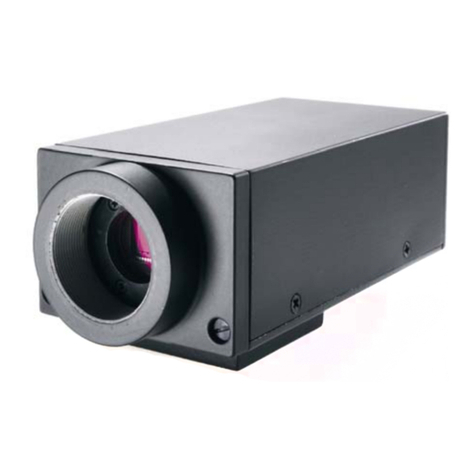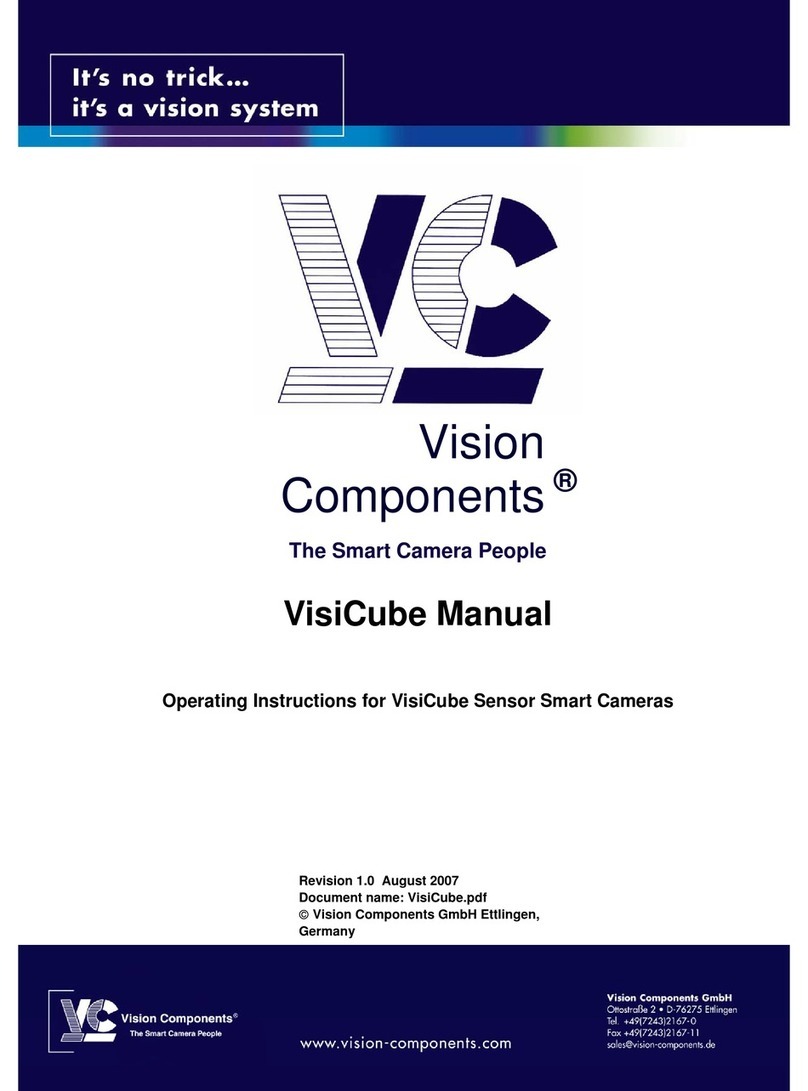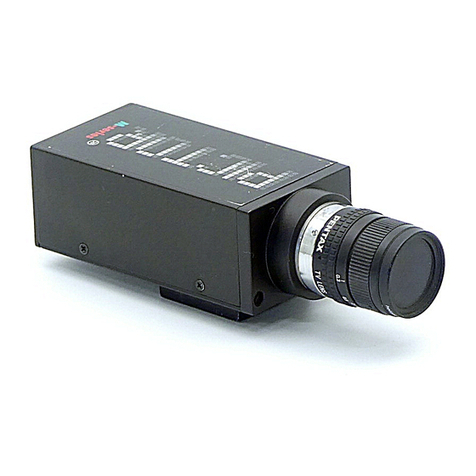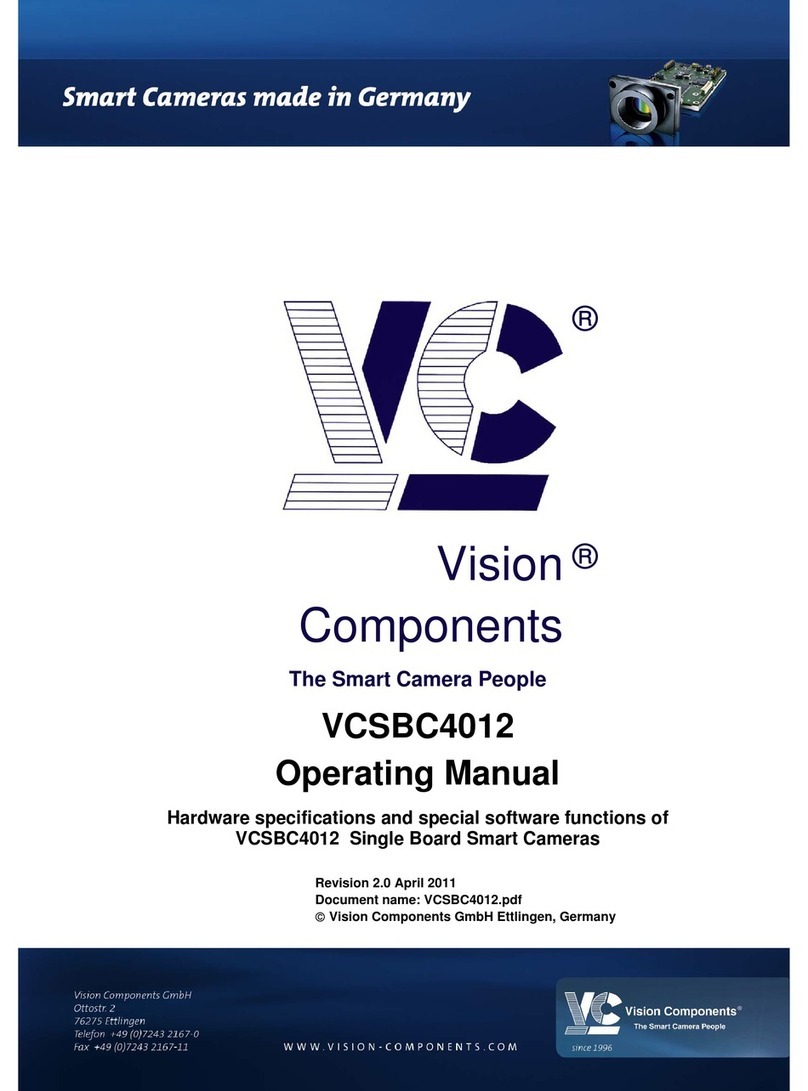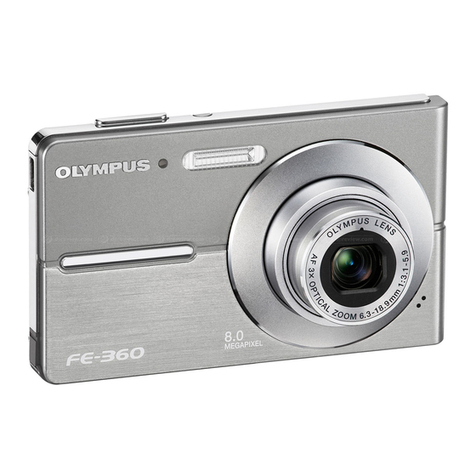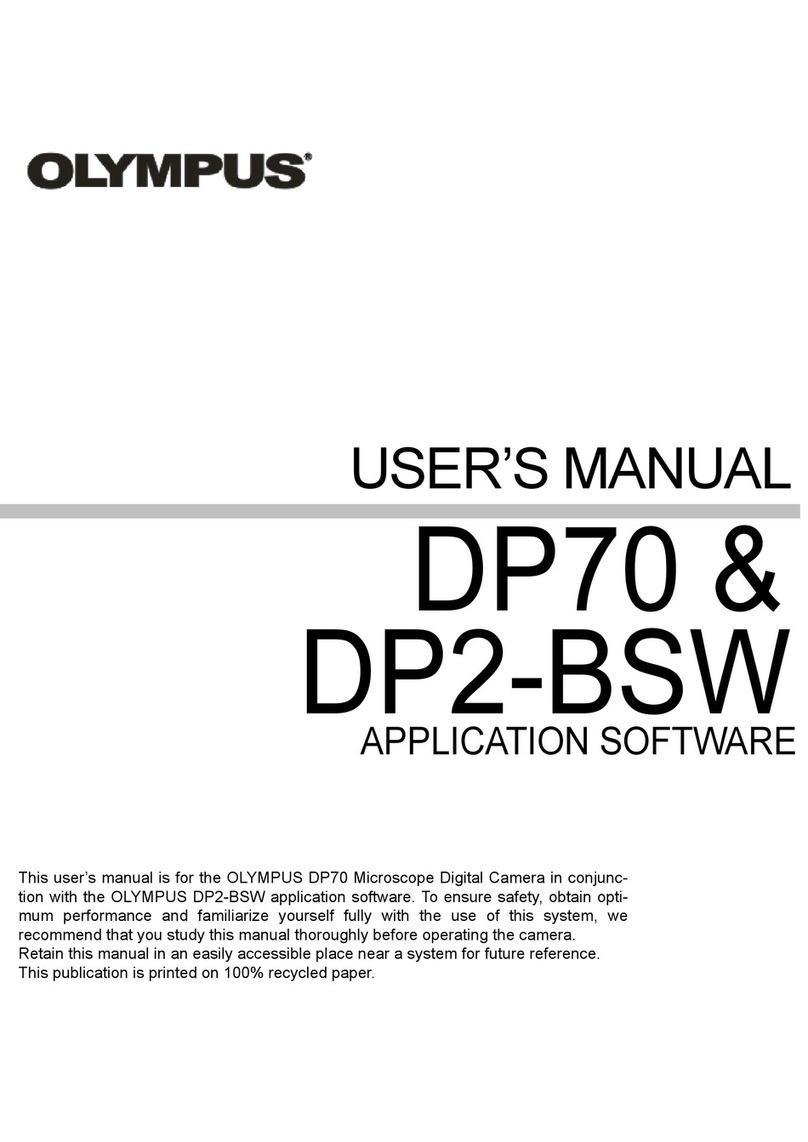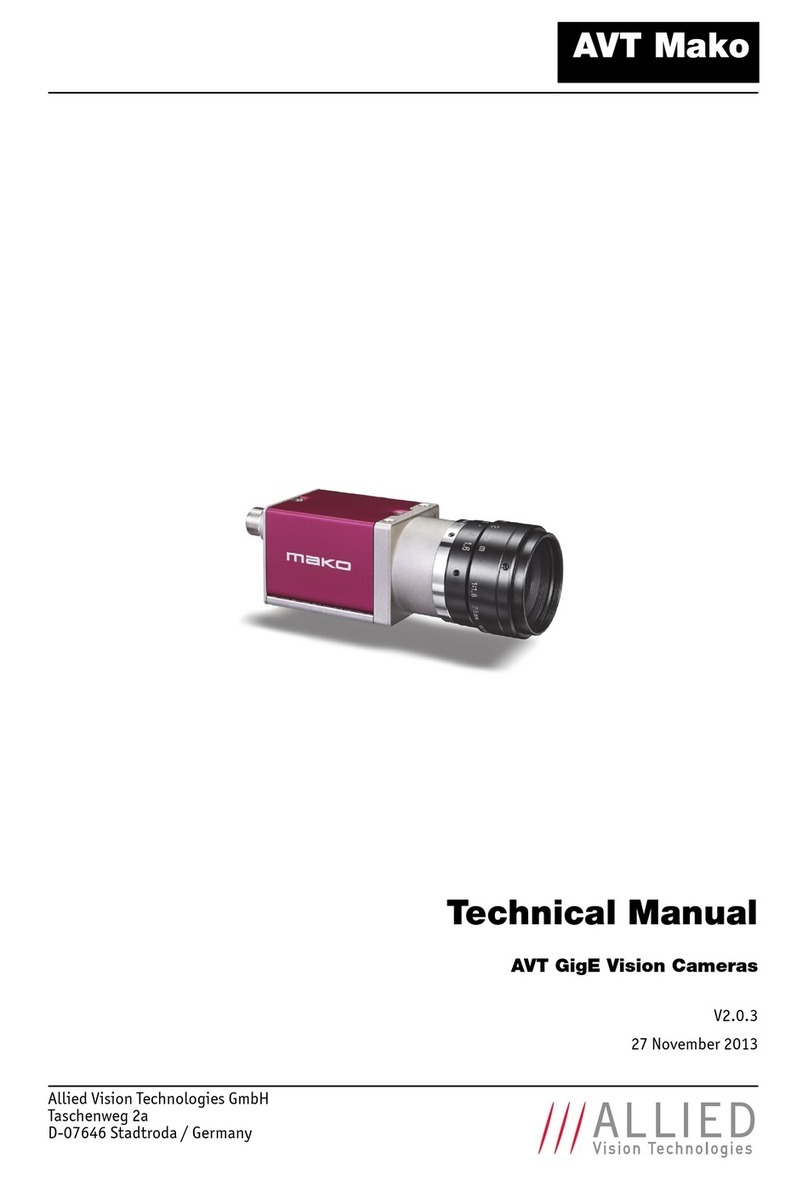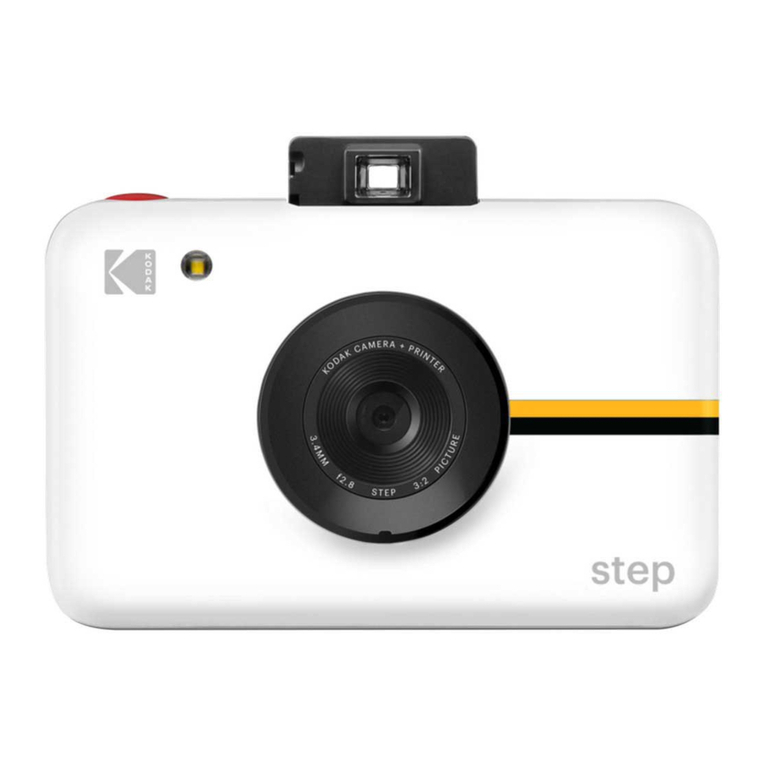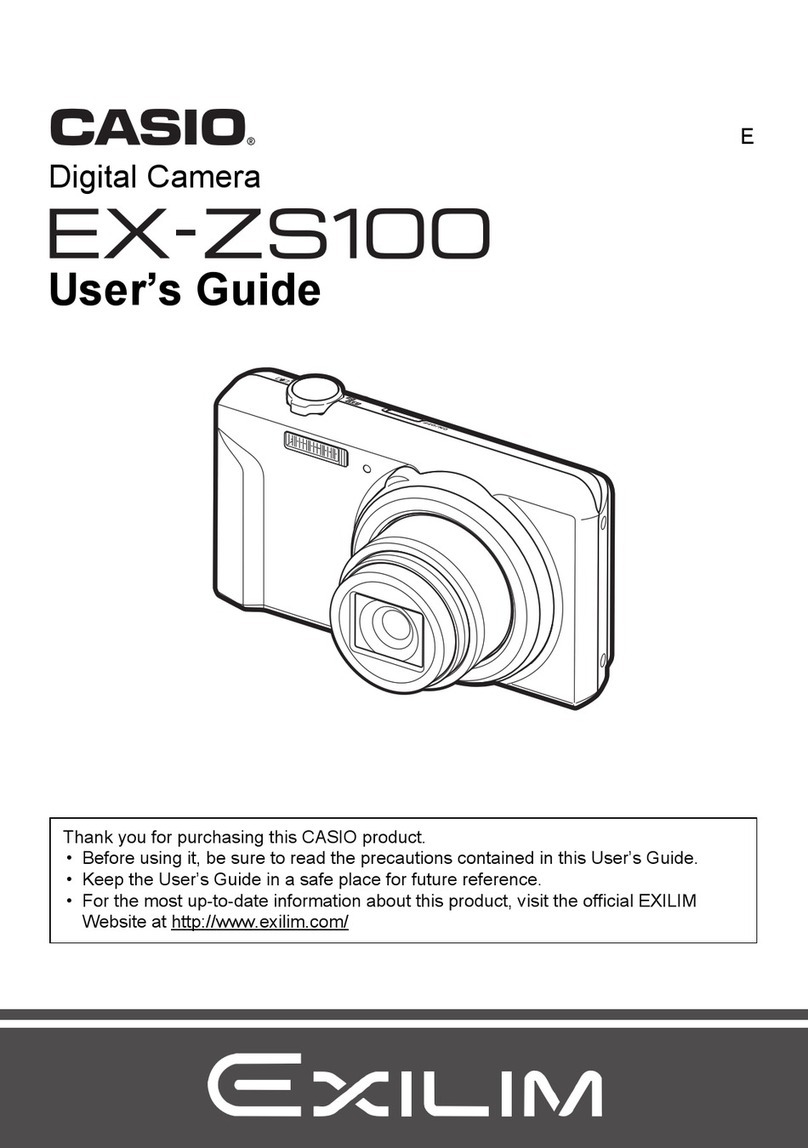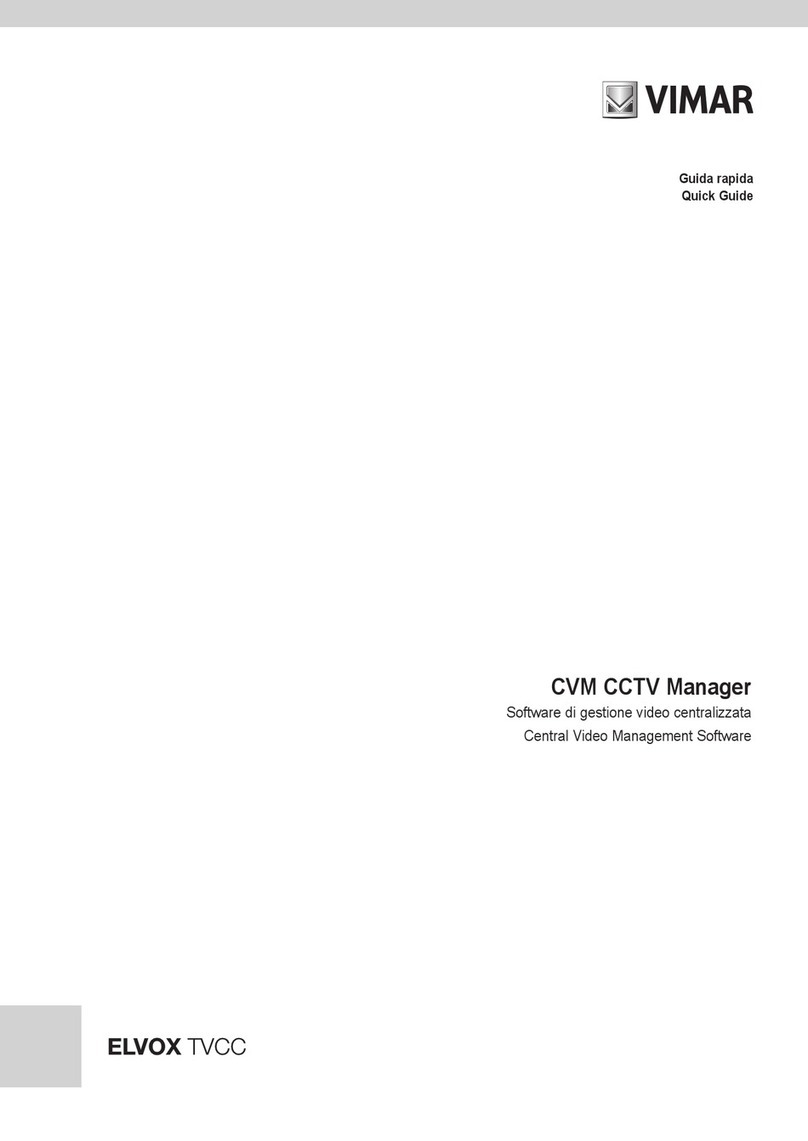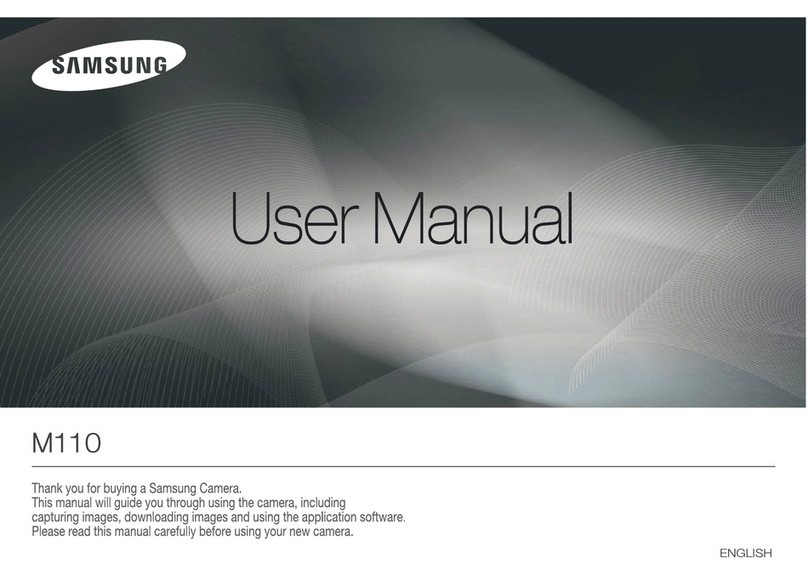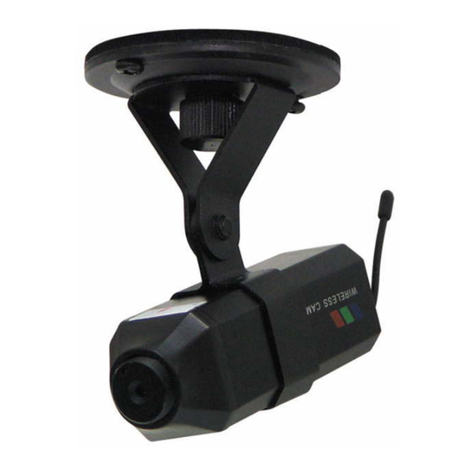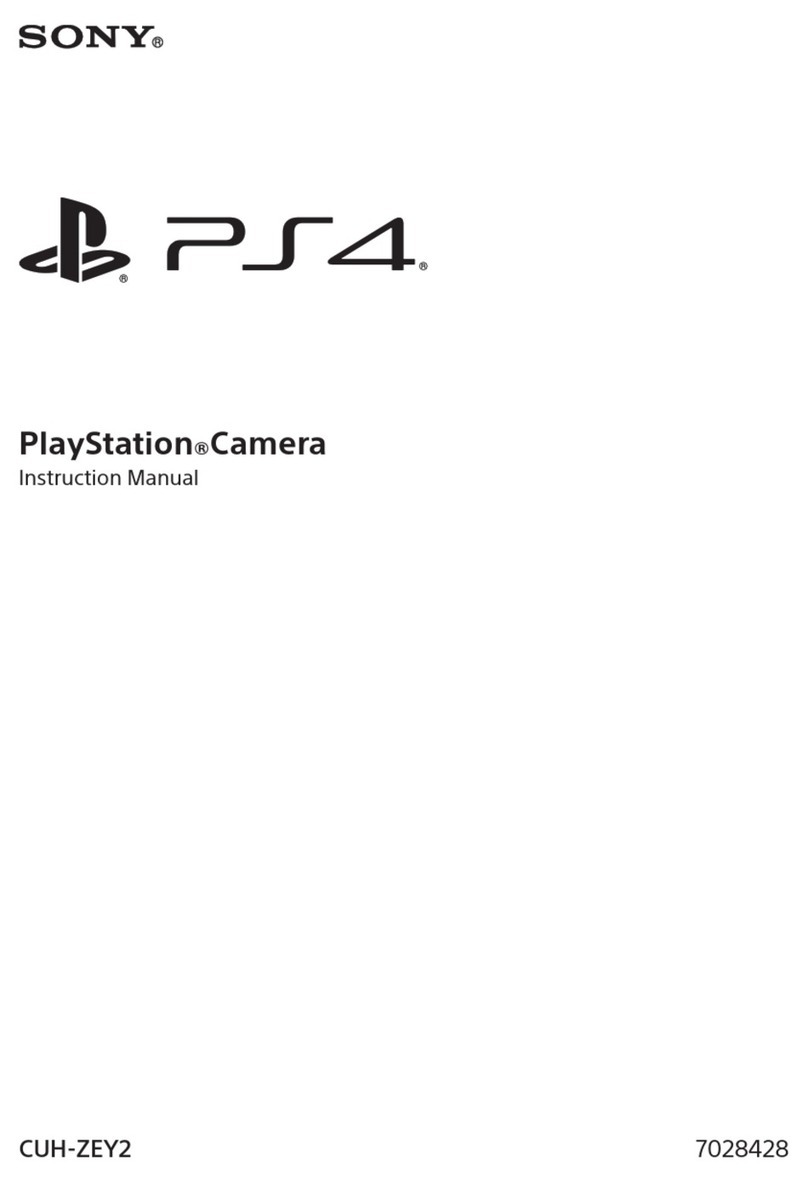Vision Components VCSBC4018 User manual

Vision
Components
The Smart Camera People
VCSBC4018 Manual
Hardware and Programming Manual for VCSBC4018
Revision 2.0 July 2005
Document name: VCSBC4018.pdf
©Vision Components GmbH Ettlingen, Germany
©1996-2005 Vision Components GmbH Ettlingen, Germany

VCSBC4018.pdf – Hardware Documentation VCSBC4018 Smart Camera 2
Foreword and Disclaimer
This documentation has been prepared with most possible care. However Vision Components GmbH
does not take any liability for possible errors. In the interest of progress, Vision Components GmbH
reserves the right to perform technical changes without further notice.
Please notify support@vision-components.com if you become aware of any errors in this manual
or if a certain topic requires more detailed documentation.
This manual is intended for information of Vision Component’s only. Any publication of this document
or parts thereof requires written permission by Vision Components GmbH.
References
Since the VCSBC4018 employs a TI processor the programming environment and functions for the
VC20XX cameras can be used for this camera (except video functions). This manual only lists the
additional SW functions available for this camera – please consult the following resources for further
reference:
Type of resource Name of file Download location
www.vision-comp.com
SW manual OS functions VCRT5.pdf Support->Reg. User Area->SW
Manuals
SW manual Image Processing
Functions VCLIB_2_0.pdf
VCLIB_300.pdf Support->Reg. User Area->SW
Manuals
Installation Manual InstallVC20XX VC40XX Support->Customer Area->Getting
Started VC20XX …
Programming Tutorial Basic Programming Tutorial for
VC20XX and VC40XX
Cameras
Support->Customer Area->Getting
Started VC20XX …
Demontration Source code Demofiles
VC20XX+VC40XX … Support->Customer Area->Demo
Code
VCnet Recovery Tool Vcnet.zip Support->Customer Area ->
Software Utilities
Further References available from the Texas Instrument Webseite (www.ti.com):
TMS320C6000 DSP Inter-Integrated Circuit (I2C) Module Reference Guide”, Literature Number:
SPRU175A, Oct. 2002
Icons / Symbols used in this manual:
The Light bulb highlights hints and ideas that may be helpful for a development.
! This warning sign alerts of possible pitfalls to avoid. Please pay careful attention to
sections marked with this sign.
Copyright ©2005 by Vision Components GmbH Ettlingen, Germany
©1996-2005 Vision Components GmbH Ettlingen, Germany

VCSBC4018.pdf – Hardware Documentation VCSBC4018 Smart Camera 3
Table of Contents
1General Information 4
2Basic Structure 5
3Technical Specifications VCSBC4018 6
4Camera Interfaces 7
4.1 J1 : Illumination Interface 8
4.1.1 Pin Assignments J1 camera socket 8
4.1.2 Electrical specifications J1 camera socket 8
4.1.3 Available accessories for this J1 camera socket 8
4.2 J2: Expansion Port / Trigger Interface 9
4.2.1 Pin Assignments J2 camera socket 9
4.2.2 Electrical specifications J2 camera socket 10
4.2.3 Matching connector and cable for J2 camera socket 11
4.3 J3: Power Supply and IO Interface 12
4.3.1 Pin Assignments J3 camera socket 12
4.3.2 Electrical specifications digital IO s J3 interface 12
4.3.3 Electrical specifications of the VCSBC4018 Power Supply J3 interface 14
4.3.4 Matching connector and cable for J3 camera socket 15
4.4 J4: Ethernet Interface 16
4.4.1 Pin Assignments J4 camera socket 16
4.4.2 Electrical specifications J4 camera interface 16
4.4.3 Matching connector and cable for J4 camera socket 17
4.5 J6: Emulator Interface 18
4.5.1 Pin Assignments J6 camera socket 18
4.5.2 Electrical specifications J6 camera socket 18
4.5.3 Matching connector and cable for J6 camera socket 18
5Accessories 19
6Programming VCSBC4018 Cameras 20
6.1 Special Software requirements for the VCSBC4018 20
6.2 Ethernet Communication 21
6.3 Using FTP with the VCSBC4018 21
6.4 Preventing Autoexec Execution / IP number reset 21
6.5 Special VCRT functions for programming VCSBC4018 cameras 23
6.5.1 Trigger Functions 23
6.5.2 Controlling the Illumination Interface J1 24
6.5.3 Controlling the TTL IOs on socket J2 24
Appendix A: Block diagram VCSBC4018 Smart Camera A
Appendix B: New VCRT Functions VCSBC4018 Smart Camera A
Appendix C: Overall Dimensions VCSBC4018 B
Appendix D: Drawing Circuit Board VCSBC4018 B
Appendix E: Drawing Camera Head VCSBC4018 C
Appendix F: Spectral Transmission of IR Filter D
Index E
©1996-2005 Vision Components GmbH Ettlingen, Germany

VCSBC4018.pdf – Hardware Documentation VCSBC4018 Smart Camera 4
1 General Information
VCSBC4018 Single Board Camera with
detached head VCSBC4018 Single Board Camera with
mounted head (standard delivery)
The VCSBC4018 is one of the fastest Smart Cameras on the market – designed for demanding OEM
applications. The computational power of 3200 MIPS on a 60 by 80mm circuit board is equal to a 2.6
GHZ Pentium PC. The VCSBC4018 includes 16 MB DRAM and a 2 MB Flash EPROM for non-volatile
program and data storage. The VCSBC4018 and can acquire full frame VGA images at 32 frames per
second (progressive scan).
Like with all VC Smart Cameras with Texas Instruments DSP, the operation system VCRT allows
multi- tasking. This means for instance that user interface commands can execute in parallel without
stopping the inspection process. It is also possible to transfer live images via TCP/IP using a
background task.
Whereas a standard progressive scan camera gets a trigger, starts exposure and then reads out the
pixel data, the VCSBC4018 has optimized the image acquisition process so that exposure, image
transfer into memory and image processing can be done in parallel. This means if exposure time and
image processing time is not longer than the transfer time of around 31msec, the full frame rate can
be maintained.
The VCSBC4018 offers an inexpensive entrance into the world of the high performance intelligent
cameras. It has a video output onto a PC via 100MBit Ethernet interface, a high speed trigger input
and output, 12-24 V digital IOs, additional TTL IOs and an illumination controller.
©1996-2005 Vision Components GmbH Ettlingen, Germany

VCSBC4018.pdf – Hardware Documentation VCSBC4018 Smart Camera 5
2 Basic Structure
The image is formed by a high-resolution progressive scan CCD sensor. One channel of video input is
digitized. The image is stored in SDRAM memory using one of the 64 DMA channels (EDMA).
Unlike most other Vision Component Smart Cameras, the VCSBC4018 does not have a direct video
output. However if monitoring of the camera image is required, this can be done by downloading via
Fast Ethernet port to PC and display on screen (see “Image Transfer” demo software under
“Support -> Customer Area -> Software Utilities”).
The TMS320C64xx DSP is one of the fastest 32bit DSPs. It features a RISC-like instruction set, up to
8 instructions can be executed in parallel, two L1 cache memories (16 Kbytes each) and a 128 Kbytes
L2 cache on chip. Its high speed 64-channel DMA controller gives additional performance. The DSP
uses fast external SDRAM as main memory. A flash EPROM provides non-volatile memory.
See Appendix A: Block diagram VCSBC4018 Smart Camera
©1996-2005 Vision Components GmbH Ettlingen, Germany

VCSBC4018.pdf – Hardware Documentation VCSBC4018 Smart Camera 6
3 Technical Specifications VCSBC4018
Component / Feature Specification
CCD Sensor: 1/3" SONY ICX424AL
eff. no. of pixels: 640(H) x 480(V)
Pixel size: 7.4(H) x 7.4(V) µm
Chip size: 5.79(H) x 4.89(V) mm
High-speed shutter: 33.3, 95.7, 158.1 microseconds, increasing with steps of 62.4
microseconds (full-frame shutter)
Low-speed shutter: up to 2 sec. adjustable integration time
Integration: full-frame
Picture taking: program-controlled, trigger controlled (interrupt); full-frame / 32 frames
per second, external high speed trigger
Clamping: zero offset digital clamping
A/D conversion: 12.5 MHz / 10 bit, only the 8 most significant bits used for grey values
Input LUT none
Image Display Via 100 Mbit Ethernet onto PC
Processor: Texas Instruments TMS320C64XX signal processor 400 MHz,
3200MIPS
RAM: 32 Mbytes SDRAM (synchronous dynamic RAM)
Memory capacity: 80 full-size images in format 640x480
Flash EPROM: 4 Mbytes flash EPROM (nonvolatile memory) for programs and data, in-
system programmable, 3 MB available to user
MMC: Not available
Process interface: 2 inputs / 4 outputs, outputs 4x400 mA
Additional LVTTL IOs: 4 Inputs, 4 Outputs, I2C Clock and Data signals
Illumination Controller: Illumination Enable LVTT output, Duration / Boost LVTTL output
Ethernet interface: 100 Mbit
CE certification: No CE Certification from Vision Components as the OEM customer is
required to certify entire system (including housing, cabling, etc.).
Storage Conditions Temperature: -20 to 60 deg C, Max. humidity: 90%, non condensing.
Operating Conditions Temperature: 0… +55 deg C (heat sink temperature), Max. humidity:
80%, non condensing.
Power Supply 12V… 24V
Power Consumption ≈2.4W (current drawn from PLC outputs or onboard 3.3 V signal
additional)
©1996-2005 Vision Components GmbH Ettlingen, Germany

VCSBC4018.pdf – Hardware Documentation VCSBC4018 Smart Camera 7
4 Camera Interfaces
J2
J1
J4
J3
J6
The VCSBC4018 camera board incorporates the following connector interfaces:
J 1 : Illumination Connector
J 2: Expansion Port Connector
J 3: VCSBC4018/ VCSBC50 Power and IO Connector1
J 4: Ethernet Connector
J 6: Emulator Connector
The pin assignments, electrical specifications as well as available accessories are shown for each
interface connector in the following sections:
1Deviating from the image, the VCSBC4018 is now shipped with a wall plug with center polarization
slot.
©1996-2005 Vision Components GmbH Ettlingen, Germany

VCSBC4018.pdf – Hardware Documentation VCSBC4018 Smart Camera 8
4.1 J1 : Illumination Interface
Pin Locations
Blank side of ribbon cable
4 3 2 1
∇
Isolated side of ribbon cable
4.1.1 Pin Assignments J1 camera socket
Pin Signal
1 GND
2 +3.3V out, max current 100mA
3 Illumination Enable, LVTTL
4 Duration / Boost LVTTL
4.1.2 Electrical specifications J1 camera socket
-Output Voltage on Pin 2 is regulated (+3.3V ±5%). Maximum current 100 mA.
-Outputs Pin 3 and 4 are Cmos low voltage TTL signals, intended to switch the illumination.
In exposure controlled mode (default) the “Illumination Enable” output high during exposure. Trig_out,
pin 16, connector J2 is high at the same time, so controlling an external light source can be done
using either output.
Caution: Do not reverse the flat cable connected to this socket!
!
4.1.3 Available accessories for this J1 camera socket
Part number of the J1 socket: 04FM-1.0BP-TF , manufactured by JST ( www.jst.com )
The matching flat cable (at 38mm length) for this connector can be ordered from Vision Components:
Order number: Ek000377
©1996-2005 Vision Components GmbH Ettlingen, Germany

VCSBC4018.pdf – Hardware Documentation VCSBC4018 Smart Camera 9
4.2 J2: Expansion Port / Trigger Interface
4.2.1 Pin Assignments J2 camera socket
Pin Number Signal
1 Q00
2 Q01
3 Q02
4 Q03
5 GND
6 GND
7 I00
8 I01
9 I02
10 I03
11 I2C_Clock
12 I2C_Data
13 NC
14 NC
15 Trig_in
16 Trig_out
17 NC
18 NC
19 Vcc (3.3V)
20 GND
Pin Locations
2 4 6 8 10 12 14 16 18 20
1 3 5 7 9 11 13 15 17 19
∇
Q00 – Q03 digital LVTTL outputs
I00 – I03: Digital LVTTL input (without pull-up resistor)
Vcc 3.3V board main voltage, Imax = 100mA
I2C_Clock and I2C_Data I2C serial Bus Interface for additional peripherals (Refer to the Texas
Instruments documentation2for further details)
Trig_in and
Trig_out Same electrical specification as with the VC20xx camera series.
However both – Trig_in and Trig_out – are not opto isolated, so special
care must be taken or Isolation has to be done externally!
!
In exposure controlled mode (default) the trigger output is high during exposure.
2“TMS320C6000 DSP Inter-Integrated Circuit (I2C) Module Reference Guide”, Literature Number:
SPRU175A, Oct. 2002
©1996-2005 Vision Components GmbH Ettlingen, Germany

VCSBC4018.pdf – Hardware Documentation VCSBC4018 Smart Camera 10
4.2.2 Electrical specifications J2 camera socket
All Signals are Low Level TTL (3.3V), not opto isolated.
The following Signals have a 4k7 pull up resistor on board:
-I2C_Clock
-I2C_Data
-Trig_in
Trigger IO Specifications:
The board features a dedicated fast TTL trigger input (for use as image capture trigger) and a fast TTL
trigger output (as strobe-light trigger). Since both signals are fast at a very low noise margin, it is
recommended to keep the cable as short as possible. Use twisted pair or even coaxial cable for this
purpose. The trigger input and output are not galvanically separated. The connected circuits should,
therefore provide galvanic isolation.
Please note that input and output are not protected against over current. The output is neither
protected against short circuit nor reverse voltage spikes from inductive loads.
Trigger input assures constant delay without jitter.
Electrical Specification of trigger input:
input voltage: Signal LOW 0V – 0.7V (LVTTL)
Input voltage: Signal High 1.5V – 3.3V (LVTTL)
input current: N/A
limiting resistor: 4k7 pull up
reverse voltage protection: none
switching delay: interrupt latency only
Electrical Specification of trigger output:
output voltage: max. 3 V LVTTL
output current: max. 8 mA
pull-up resistor: none, LVTTL push-pull output
Caution: Place the connectors at the correct position – not reversed or shifted. The position of Pin 1
for each connector is marked in Appendix D: Drawing Circuit Board VCSBC4018.
©1996-2005 Vision Components GmbH Ettlingen, Germany

VCSBC4018.pdf – Hardware Documentation VCSBC4018 Smart Camera 11
External Trigger Timing:
Signal Description Value / Tolerance
t DEL Delay from external trigger input to trigger output 62.6 µsec ±100 nsec
t START Delay from external trigger input to start of
exposure 70 µsec ±100 nsec
∆t DEL and
∆t START Jitter Less than 10nsec
t1Time form the leading edge of the trigger output
signal to the trailing edge of the exposure signal 7.4 µsec ±100 nsec
t2Time from leading edge of the exposure signal to
the trailing edge of the trig_out signal 19 µsec ±100 nsec
4.2.3 Matching connector and cable for J2 camera socket
The socket J2 has the following part number: 8775967-2050, manufacturer Molex (www.molex.com)
The matching connector has the following part number: 51110-2050
Vision Components does not currently manufacture a cable for this connector. Please order the
matching connector from the manufacturer Molex.
Alternatively an additional 12 pin Power Supply /PLC and a 8 pin Ethernet cable (Cable set for
VCSBC4018, VK000229 see section 5) can be used next to each other to cover all contacts. Since
only pin 1,2,5 and 6 of the 8 pin Ethernet connector are connected, place these two plugs on the J2
sockets as shown below:
Pin 1-12 use J3 cable Pin 13-20 use J4 cable (pin number of connector given here)
2 4 6 8 10 12 NC 5 NC 1
1 3 5 7 9 11 NC 6 NC 2
∇
Compare with socket pin numbers in 4.2.1
Trig_in
Trig_out
Exposure
internal signal t DEL
t2
t1
t START Exposure time
©1996-2005 Vision Components GmbH Ettlingen, Germany

VCSBC4018.pdf – Hardware Documentation VCSBC4018 Smart Camera 12
4.3 J3: Power Supply and IO Interface
The J3 connector includes the camera power supply and the digital IOs.
4.3.1 Pin Assignments J3 camera socket
J3 Standard
VCSBC4018 socket:
Molex: 8783212-20 with
center polarization slot
(different to camera
images in this manual!)
Pin Number Signal
1 Out0
2 Power (12-24V)
3 Out1
4 Power GND
5 Out2
6 NC
7 Out3
8 GND
9 In0
10 NC
11 In1
12 GND
Pin Locations
2 4 6 8 10 12
1 3 5 7 9 11
∇
4.3.2 Electrical specifications digital IO s J3 interface
The camera has two PLC compatible inputs and four PLC compatible high-current outputs for
controlling machines and processes.
Inputs and outputs are not galvanically decoupled from the supply voltage.
!
A protective diode ensures, the poles of the supply voltage from the power supply of the PLC can not
be swapped.
The outputs are floating when low- pull down resistor required.
©1996-2005 Vision Components GmbH Ettlingen, Germany

VCSBC4018.pdf – Hardware Documentation VCSBC4018 Smart Camera 13
Input Signals IO interface
Nominal voltage: 12 – 24 V
Absolute maximum voltage: voltages greater than 40 V can destroy the inputs
Type: Circuit GND directly connected
Input current: 1 mA @ 24V
Threshold value: 10 V
Internal signal delay: - No delay for direct IO access
- 10ms delay for DSP polling
The PLC-compatible inputs (24-V level, the positive signal is connected) include input protection
circuits. A minimum voltage of 10V is required to reliably sense a logic high signal.
Output Signals IO Interface
Operating voltage: external source 12 – 24 V
Absolute maximum voltage: voltages greater than 40 V can destroy the outputs
Type: Circuit GND directly connected
Switching voltage: positive switching (PNP)
Current: max. 400 mA per output
Absolute maximum current: total currents greater than 1000 mA can destroy plugs and
cables
Always consider the total sum of all output currents
Total current / over current
output protection Yes – if Σiout > 1A →all Outputs are switched off – Retry
after 3 seconds
Switching power: max. 9.6 W (24 V * 400 mA) per output
Reverse voltage protection yes, for external voltage
Protection against inductive
loads: yes
Resistance when switched on: 0.2 - 0.8 Ohm
Short circuit protection: full protection
The PLC outputs feature a highly integrated MOSFET, high-side switch with built-in protection . It is
possible to switch inductive or capacitive loads. The protective feature of the outputs will produce
pulses on the outputs, if the limiting values are exceeded.
Output drivers feature short circuit end thermal overload protection
For additional protection of the output drivers, the I/O processor monitors the total PLC current, and
switches off all outputs if the maximum threshold value is exceeded.
©1996-2005 Vision Components GmbH Ettlingen, Germany

VCSBC4018.pdf – Hardware Documentation VCSBC4018 Smart Camera 14
4.3.3 Electrical specifications of the VCSBC4018 Power Supply J3 interface
Nominal Voltage: 12V – 24V
Nominal Power Consumption3: 2.4W
Minimum operational voltage (including ripple): 9V
Minimum Operating voltage and corresponding
current: 12V
200mA 4
Maximum Operating voltage and corresponding
current: 24V
100mA 3
Maximum operational Voltage (including ripple): 30V
Power must be connected to the 12 pin J3 I/O connector.
Camera power is regulated and galvanically separated inside the camera, so only an unregulated
power source of 12 V to 24V is required. The camera is, however, very sensitive to power supply
interruption. Please make sure, that the voltage never exceeds the limits of < 9V, > 30V even for a
short period of time. In case of trouble it is recommended to backup the power supply by a capacitor
or a battery large enough to prevent power interruptions.
Supply Current (typical) versus Supply Voltage
(no current drawn from PLC outputs/ onboard 3.3V)
50
70
90
110
130
150
170
190
210
230
9 1012141618202224262830
U [V]
I [mA]
1,4
1,5
1,6
1,7
1,8
1,9
2
2,1
2,2
2,3
P [W]
I[mA] P[W]
3Maximum power consumption without using the PLC output or onboard 3.3V supply.
4Current drawn for PLC outputs and the 3.3V on board signal needs to be added to these figures.
©1996-2005 Vision Components GmbH Ettlingen, Germany

VCSBC4018.pdf – Hardware Documentation VCSBC4018 Smart Camera 15
4.3.4 Matching connector and cable for J3 camera socket
J2 Standard VCSBC4018 socket: Molex: 8783212-20 with center polarization slot (see above)
The wall socket with polarization slot has been used for this camera in order to avoid camera damage
caused by shifted or reversed plug connections.
The standard VCSBC50 cable can be used to prevent shifted plug mounting:
Color code VCSBC50/ VCSBC4018 Power / PLC Cable VC000173:
Pin Number Signal
1 Out0 Blue
2 Power (24V) Red
3 Out1 purple
4 Power GND Black
5 Out2 Grey/ red
6 NC Green
7 Out3 Blue/ red
8 GND Yellow
9 In0 grey
10 NC white
11 In1 pink
12 GND brown
Pin arrangement (looking down on circuit board socket):
2 4 6 8 10 12
1 3 5 7 9 11
∇
For additional safety against reversed connections (using the with center polarization slot of the
socket), please order one of the following connectors from the manufacturer Molex (www.molex.com):
Part numbers: 87568-1263, 87568-1264, 87568-1273, 87568-1274
©1996-2005 Vision Components GmbH Ettlingen, Germany

VCSBC4018.pdf – Hardware Documentation VCSBC4018 Smart Camera 16
4.4 J4: Ethernet Interface
4.4.1 Pin Assignments J4 camera socket
Pin Number Signal
1 TXD+
2 TXD-
3 GND
4 GND
5 RXD+
6 RXD-
7 GND
8 GND
Pin locations:
2 4 6 8
1 3 5 7
∇
4.4.2 Electrical specifications J4 camera interface
The Ethernet interface is decoupled from the rest of the circuit with a 1.5kV insulation transformer. For
all connection specifications refer to the Ethernet standard.
©1996-2005 Vision Components GmbH Ettlingen, Germany

VCSBC4018.pdf – Hardware Documentation VCSBC4018 Smart Camera 17
4.4.3 Matching connector and cable for J4 camera socket
Socket J4 on circuit board: Part number: 87759-0850, manufacturer: Molex
Matching connector: Part number: 51110-0850, manufacturer: Molex
There are two different cables now available for the J4 Ethernet interface:
1. OEM cable:
VK000206 – Molex connector 51110-0850 with 4 cables attached, 0.5m long, no connector on
other end. This cable is also part of the “cable set” VK000229 (see section 5 Accessories).
2. Testing cable:
VK000251 - Molex connector 51110-0850 with 4 cables and confectioned with RJ45
connector on other end, 2.5m long.
Pin assignment OEM Ethernet cable VK000206:
PIN (J4) Signal Cable Color
1 TXD+ blue
2 TXD- red
3 GND N/C
4 GND N/C
5 RXD+ Pink / black
6 RXD- green
7 GND N/C
8 GND N/C
Pin assignment testing Ethernet cable VK000251:
PIN (J4) Cable Color (J4) Signal Cable Color (RJ45) PIN (RJ45)
1 blue TXD+ Orange/ white 1
2 red TXD- Orange 2
3 N/C GND N/C
4 N/C GND N/C
5 Pink / black RXD+ Green/ white 3
6 green RXD- Green 6
7 N/C GND N/C
8 N/C GND N/C
The change of core colors results from connecting two cables (VK000206 and a standard Ethernet cat
5 cable).
©1996-2005 Vision Components GmbH Ettlingen, Germany

VCSBC4018.pdf – Hardware Documentation VCSBC4018 Smart Camera 18
4.5 J6: Emulator Interface
4.5.1 Pin Assignments J6 camera socket
Pin Number Signal Color
1 TMS Black
2 TRST Pink
3 TDI Purple
4 NC
5 Vcc(3.3V) White
6 NC
7 TD0 Red
8 NC
9 TCK Blue
10 NC
11 TCK Blue
12 NC
13 EMU0 Yellow
14 EMU1 Grey
Pin Number Signal
1 Vcc (3.3V)
2 GND
3 NC
4 EMU0
5 EMU1
6 TRST
7 TCK
8 TDI
9 TD0
10 TMS
Pin Locations J6 Socket:
10 9 8 7 6 5 4 3 2 1
∇Pin Locations JTAG connector (Molex 8775967-2050):
∇
1 3 5 7 9 11 13
2 4 6 8 10 12 14
4.5.2 Electrical specifications J6 camera socket
This information is available on request.
4.5.3 Matching connector and cable for J6 camera socket
VC provides an adaptor cable that connects the J6 Emulator socket with the Jtag Emulator connector.
JST Plug
For Jtag module
80mm
14 pin connector for J6
socket
Order Number for the J6 /JTAG Adaptor cable from Vision Components: VK000248
©1996-2005 Vision Components GmbH Ettlingen, Germany

VCSBC4018.pdf – Hardware Documentation VCSBC4018 Smart Camera 19
5 Accessories
For interface cables and connectors available also consult the corresponding section in chapter 4 of
this manual.
The VCSBC4018 can be used with 12mm threaded micro lenses or C-mount lens holder. Due to the
different options these lens holders have to be ordered separately to the camera. If ordered together,
VC ships the camera fully assembled. The C-mount flange distance can then be accurately adjusted
at no additional charge. Please remove the protective foil on the CCD in case the camera has been
ordered and delivered without lens holder!
!
Camera and Lens holder order numbers:
Product / Service description Order
Number
VCSBC4018 Single Board Smart Camera without lens holder VK000208
Lens holder C Mount incl. adjustment (IR Filter EK000625 included) VK000087
Lens holder 12mm (Clear glass window EK000624 included) VK000091
Further accessories available for the VCSBC4018:
Product description Order
Number
Power adapter for rail mounting, Input Voltage 100 – 240VAC 50/60 Hz
Output Voltage DC 24V +/-5%, max. 300 mA (7.5 W)
Equipped with connecting clamps for AC input and 24V output, CE cert.
VK000036
Cable for illumination Interface J1 (flat ribbon, length = 38mm) EK000377
Cable for Expansion Port J2 (use cable set VK000229 see section 0) It is
recommended to manufacture matching circuit board VK000229
Power Supply and IO Interface cable for J3 VK000173
Ethernet OEM Cable for J4 (0.5m length, 4 single cores) VK000206
Ethernet testing Cable for J4 (2.5m length, other end with RJ45 connector) VK000251
Emulator Adaptor Cable for J6 VK000248
Cable set for VCSBC4018 (contains VK000206 and VK000173) VK000229
Cable for Emulator interface J6 VK000086
Flex cables for detached Camera Head mounting: 30mm x 20 1
80mm x 20 core
1The 30mm flex cable is part of standard delivery. 200mm x 20 core
EK000321
EK000322
EK000629
Clear glass protective sensor window (replaces IR filter in camera head) EK000624
IR cut filter (camera is shipped with this filter mounted) refer to Appendix D EK000625
All cable lengths are 0.5m unless stated otherwise.
Please also refer to the VC website www.vision-components.com for an up to date list of
accessories.
©1996-2005 Vision Components GmbH Ettlingen, Germany

VCSBC4018.pdf – Hardware Documentation VCSBC4018 Smart Camera 20
6 Programming VCSBC4018 Cameras
The VCSBC4018 operating system includes some additional functions, mainly for the control of the
additional interfaces. Without direct VGA output some video control functions are not implemented for
this camera.
This manual describes the differences between the standard VCRT 5 operating system functions and
the special function library of the VCSBC40. For programming please also consult the VCRT 5 and
VCLIB 2.0 and VCLIB 3.0 manuals (see the list of references at the beginning of this manual).
6.1 Special Software requirements for the VCSBC4018
The following table shows the compatible setup options using the VCSBC4018 camera:
Code Composer Studio
Version VCRT PC Lib Version
VCLIB Version VCRT Camera OS
Version:
CCS 2.1 (C6000) or
CCS 3.1 (C6000)5VCRT 5.18 VCLIB 2.0 and 3.0 VCRT 5.22
The VCRT PC lib Operation System PC library, the VCLIB Image Processing Library as well as the
VCRT Camera Operation System can be downloaded from Support section of the Vision Components
Website.
Software manuals are located in the “Registered User Area”. This download area can be accessed
after registration and log in on the VC Website.
Software updates are available from the “Customer Area”. For access to the customer area please
register your Vision Components development software for VC cameras with TI processor. Software
registration can be done after logging in using the license key code shipped with each development
bundle. For this please follow the “Register your Software” link under the “User Menu”.
TP5PT For using CCS3.1 insert “strip6x new.out” as first line under “build options -> final build steps”.
©1996-2005 Vision Components GmbH Ettlingen, Germany
Table of contents
Other Vision Components Digital Camera manuals
